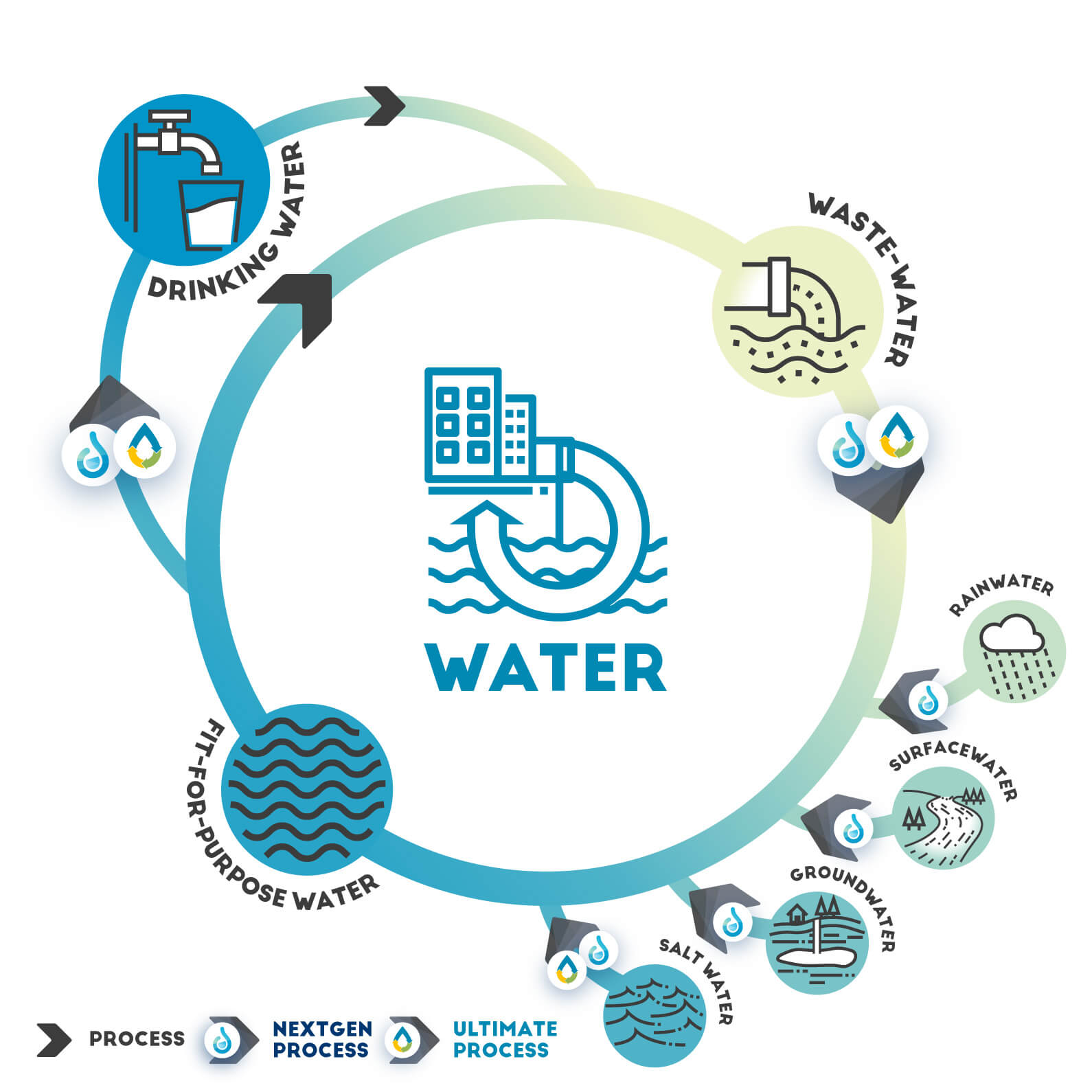
Unique selling points
- Simple implementation
- Low energy consumption
- High adsorption capacity
- Regeneration process available
The water treatment train proposed in this study case aims to treat water from an urban wastewater treatment plant to achieve the required quality for industrial reuse. The technology lineup includes a double-pass reverse osmosis system. To enhance energy efficiency, the plan is to replace the second osmosis step with zeolite adsorption, effectively reducing the ammonium content in the treated water. This innovative approach not only aligns with sustainability goals but also emphasizes the integration of zeolites for a more environmentally friendly and resource-efficient industrial water treatment process.
Exploring and adopting sustainable technologies is essential not only for enhancing the efficiency of water purification processes but also for minimizing the ecological impact and contributing to a more sustainable future. In this context, the quest for alternative solutions becomes a key focus to address the energy challenges posed by commonly used techniques and pave the way for more environmentally friendly water treatment practices.
Zeolite emerges as a promising alternative, offering efficient adsorption of heavy metals and compounds through ion exchange. This innovative approach not only enhances water quality but also promotes sustainable and efficient resource management practices, presenting a viable solution to the pressing issues faced by water treatment plants.
Description of the technology
Zeolites have been widely used as catalysts, ion exchangers, and adsorbents since their industrial breakthrough in the 1950s and continue to be state-of the-art adsorbents in many separation processes (Perez-Botella et al. 2022). Furthermore, their properties make them materials of choice for developing and emerging separation applications. The use of zeolites as adsorbents stems ultimately from their microporosity and regular pore size (Perez-Botella et al. 2022). They are mainly composed of aluminosilicates with a three-dimensional structural composed by Al-O and Si-O tetrahedra networks (Wen et al. 2013, Xue et al. 2018).
Zeolite has an excellent ion exchange capacity, and its cation exchange ranking is Cs+ > Rb+ > K+ > NH4+ > Sr+ > Na+ > Ca2+ > Fe3+ (Lin et al. 2013, Pan et al. 2019).
Flow scheme of the technology

Synergetic effects and motivation for the implementation of the technology
The reuse of industrial water comes with its set of challenges, particularly concerning the presence of ammonium ions (NH4+), which have been identified as a significant factor influencing corrosion. According to a study conducted by Arjmandi et al. (2019), the weight of influential parameters reveals that ammonium, along with dissolved oxygen and iron, exerts the maximum effect on corrosion.
The need for sustainable water resource management has driven the reuse of industrial water, especially in cooling systems. However, Eslamian et al. (2013) caution that despite the suitability of wastewater reuse for sustainable water management, there are associated risks. Among these risks, the impact of ammonium on corrosion stands out.
Efficient techniques for reducing NH4+ concentrations in reused industrial water, as zeolite adsorption, are crucial to mitigate corrosion risks. Importantly, these techniques should also align with energy efficiency standards, advocating for methods with lower energy consumption compared to conventional processes like reverse osmosis (RO).
Balancing the imperative for water resource sustainability with the necessity to curb corrosion highlights the need for innovative, low-energy methods to effectively lower NH4+ concentrations in industrial water reuse. Addressing these challenges will not only enhance the longevity of infrastructure but also contribute to the overall sustainability goals of industrial water management.
